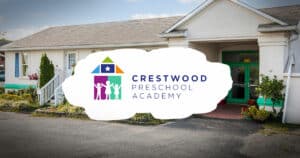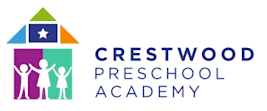If you want to tap into the benefits of reading to your child, then you may already know that not all books are created equally. Some books are worth reading over and over, and these are the books you want to collect for your bookshelves.
Quality literature has countless benefits, like exposing them to new cultures and ideas and inspiring their imagination. It prepares them for school by teaching grammar, sentence structure, and vocabulary. Interesting illustrations teach art appreciation, and the stories can develop social and emotional awareness. Good books can also give your child a leg-up on school subjects like history, science, geography, math, social studies, and so much more!
What Is Quality Literature?
What exactly is quality literature? While this term might make you think of Shakespeare or famous poets, there are many forms of quality literature.
Literature is like eating a meal. While dessert isn’t off limits, most of the meal should be something nutritious, like protein, fruits, veggies, dairy, and grains. Quality literature is like the nutritious part of the meal: you want your child to be reading (consuming) the best literature to grow their minds, imaginations, and educational skills.
A book would be considered quality literature if it includes all (or most) of the following:
- Well-written, interesting stories: Some stories are too simple, don’t make much sense, or don’t provide a positive message.
- Age-appropriate words: Most of the words should be understandable to a child, but quality literature will stretch a child’s vocabulary just a little bit.
- An overall positive message or conflict is resolved: Quality literature often have role models, teaches life lessons or positive character quality, or has inspiring themes. Conflict resolution is also important.
- Illustrations are detailed: Interesting illustrations draw children back to the book because they want to look at the pictures. Detailed illustrations allow you to discuss the pictures, which further expose your child to language understanding.
- Has won an award: Outstanding books are awarded every year. Some popular awards are the Randolph Caldecott Medal, Coretta Scott King Book Awards, and Pura Belpré Award.
In summary, if you (or your child!) want to read the book more than once, it’s likely quality literature.
What’s not quality literature? Here are a few things to avoid when choosing books:
- Trending animated characters: Whether it’s talking trains, classic princesses, or the next trending movie or TV show, these are not quality literature. Children may want to read these books more than once, but it’s not because the literature is quality.
- Graphic novels: While not all graphic novels are bad, these can be a crutch that cripples children from making the transition from picture books to chapter books. The plot lines are often shallow and feel too much like a cartoon to be taken seriously.
These types of books would be the “desserts” of literature: they are fine in moderation but shouldn’t be a child’s only exposure to reading.
How to Find Quality Literature
Quality literature is surprisingly easy to find through your local library.
Type in “quality literature + age of your child” into a search bar for thousands of options for quality books. You can request dozens of these books at a time from the library.
You can also ask your librarian for suggestions. They will know of classic books as well as new award winners and recent releases.
Here are some age-appropriate quality literature books for young children.
Infant
- Ten Little Fingers and Ten Little Toes, by Mem Fox.
- Baby Bear, Baby Bear, What Do You See? by Bill Martin Jr.
- I Am a Bunny, by Ole Risom
- Mommies Say Shhh! by Patricia Polacco.
- Peekaboo Bedtime, by Rachel Isadora.
- Pat the Bunny, by Dorothy Kunhardt
- My Farm Friends, by Wendell Minor.
- The Very Hungry Caterpillar, by Eric Carle
- Moo, Baa, La la la, by Sandra Boynton
- Chicka Chicka Boom Boom, by Bill Martin Jr
- Goodnight, Moon, by Margaret Wise Brown
- The Tale of Peter Rabbit, by Beatrix Potter
- The Snowy Day, by Ezra Jack Keats
Toddler
- Mike Mulligan and His Steam Shovel, by Virginia Lee Burton
- Corduroy, by Don Freeman
- The Little Red Caboose, by Little Golden Books
- Llama, Llama, Red Pajama, by Anna Dewdney
- Little Blue Truck, by Alice Shertle
Pre-K
- Madeline, by Ludwig Bemelmans
- The Story of Ferdinand, by Munro Leaf
- Green Eggs and Ham, by Dr. Seuss
- Are You My Mother?, by P.D. Eastman
- Make Way for Ducklings, by Robert McCloskey
- Blueberries for Sal, by Robert McCloskey
Take It to the Next Level
As you read a book with your child, ask questions or add your own comments before turning the page.
For instance, tell your baby or toddler what sound animals in the pictures make. Or, if your child is older, ask them what sound it makes. Tell young children about colors, shapes, and numbers, as well as spatial concepts like up and down, in and out, and over and under.
Older children can also make social and emotional connections through stories. If a picture shows a character who is sad, happy, or surprised, ask them why they might feel that way. Or if there is conflict in the story, ask your child what should happen to make things right.
Technology Can’t Replace the Parent
If you want your child to experience the benefits of reading but don’t have the time to sit down with your child, you might turn to audiobooks or children’s podcasts. Your library may also have children’s books that read the book aloud to your child.
While these are better than iPads or television shows, podcasts and audiobooks aren’t the same as reading with your child. This is because the emotional bonding over books is lacking; a stranger is reading to your child.
This doesn’t mean that you can never let your child listen to a podcast or audiobook, but if you want your child to fall in love with reading, it’s vital to take the time to read with your child.

Crestwood Preschool Academy is proud to offer an outstanding educational and fun curriculum that prepares your child for kindergarten per state academic standards.
Contact Crestwood Preschool Academy today if you’re looking to give your child a head start in school!
